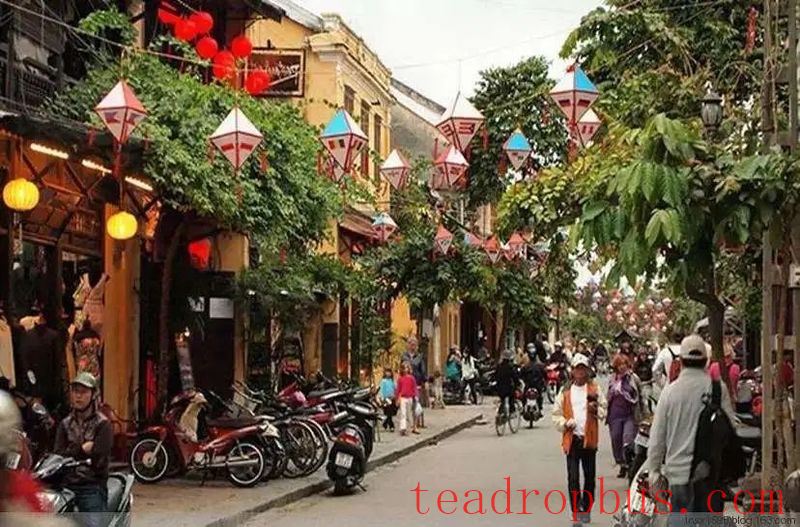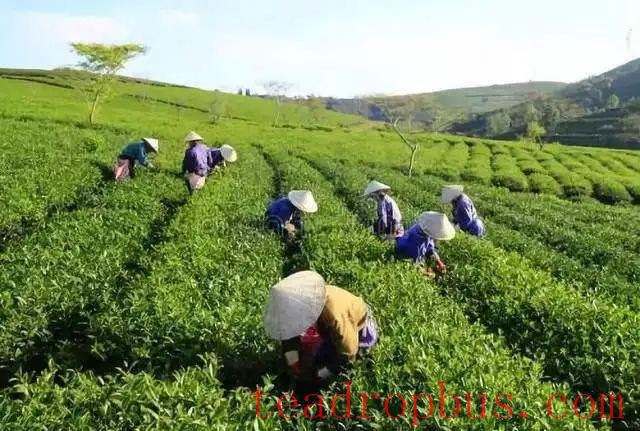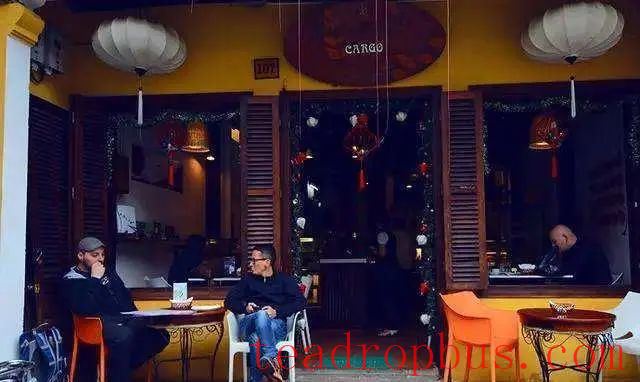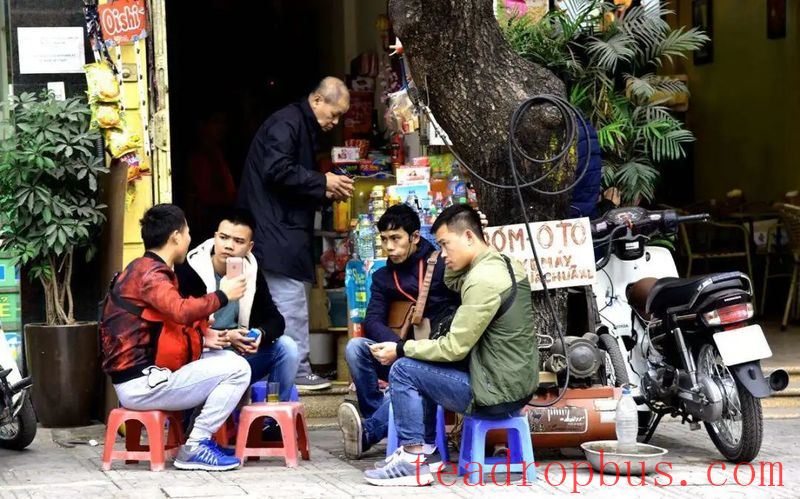Just like in China, Tea drinking is an important way of entertaining guests and socializing in Vietnam, representing a refined lifestyle and cultural practice.
Influenced by Buddhist culture, the Vietnamese style of Tea drinking does not involve the numerous rituals of Japanese tea ceremonies or the performance-like Gongfu tea procedures of Chinese Tea culture. Instead, it emphasizes the drinking of Zen tea. In some Vietnamese homes, there will be a set of redwood furniture styled after tree stumps placed in the living room. On the table, a set of ceramic teaware is laid out. Once the host has prepared the tea leaves, teaware, and water, they place their hands together in prayer to welcome the guests.

The guests return the gesture with their hands clasped and follow the host into the tea room. The host invites the guests to sit on the “tree stumps,” as if they were relaxing under a large tree. The guests sit down in sequence and form a circle for Zen sitting meditation. The cups on the tea tray are placed closely together, and the tea must undergo several infusions to achieve a uniform flavor and color. Then, starting from the left, the host serves tea to each guest in turn.
When serving tea, the host ensures that the most beautiful side of the cup faces the guest. The host raises the cup to offer it to the guest, and both slightly bow their heads as they exchange the cup with both hands. The entire process is conducted in silence, emphasizing the principle of “stillness in action.” This unique method of tea drinking can quickly bring people closer together, allowing them to become acquainted despite initially being strangers.

Vietnamese people typically do not have the habit of drinking tea before meals; instead, they prefer to drink tea after eating, believing it aids digestion and cleanses the mouth.
The Vietnamese have a saying called “wine tea,” which means drinking wine before tea, with the wine preceding the tea. In customs related to entertaining guests and weddings, such as during betrothal negotiations and wedding ceremonies, there is a tradition of offering wine and tea. Vietnamese tea differs from Chinese tea in that they favor teas with strong flavors, often adding various spices like star anise, fennel, licorice, and others to enhance the taste of the tea.

Most ordinary Vietnamese households maintain the custom of serving tea to guests, and on the streets of Vietnam, tea drinking becomes even more diverse. Influenced by Western culture, there are few traditional tea houses in Vietnam, with the role often filled by various Western-style coffee shops. At these coffee shops, you can brew a pot of clear tea, order a plate of mung bean cakes, and listen to the unique sound of the Vietnamese monochord, creating an exotic atmosphere. Vietnamese coffee shops also sell a variety of teas, including bagged teas and flower teas, for customers to enjoy.

In addition to drinking tea at coffee shops, ordinary Vietnamese people prefer to drink tea in open-air settings. Under the shade of trees at street corners, makeshift tea stalls can be found everywhere. These stalls have a few chairs, a teapot, some tea cups, along with sugar cakes and packets of cigarettes. Groups of Vietnamese people gather around to drink tea and rest. In the evenings, the tea stalls rent out mats, where groups of three to five people sit on the grass mats, sipping tea and chatting, enjoying the lively scenes of bustling crowds and passing vehicles, adding a touch of life's charm.